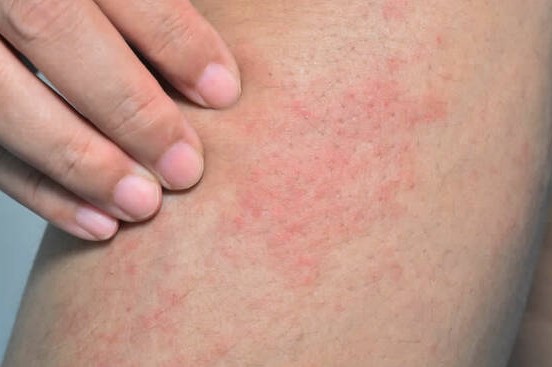
Contact dermatitis: can a nickel allergy be the cause?
When talking about dermatological allergies, one cannot forget to consider nickel allergy, one of the most common causes of allergic contact dermatitis
Nickel, in fact, is a metal typically used in jewellery, piercings, watches and various everyday objects, such as keys, coins, clothing zips and even in cosmetics, detergents and electronic cigarettes, or door handles.
In addition, nickel is also present in some foods, particularly long-life foods sold in cans.
In short, the chances of a person allergic to nickel coming into contact with it are particularly high.
Like all allergies, nickel allergies are caused by an abnormal response of the immune system to a substance it does not recognise and can occur either on first contact with the metal or, in adults, after prolonged exposure over time.
Nickel allergy: What are the symptoms?
People allergic to nickel, when touching or wearing an object containing this specific metal, are prone to develop contact dermatitis within 12-48 hours.
The itchy patches caused by a nickel allergy may extend to other areas of the body besides those that have come into direct contact with nickel, and may persist for up to two weeks.
The skin becomes dry, reddened and may become covered with small cuts and blisters, and in severe cases, exudative fluid may leak out.
As mentioned above, nickel allergy can also occur after prolonged contact, perhaps in adult individuals who are allergic but have never developed manifestations related to contact with this specific metal.
In most cases it affects individuals who are already allergic or familiar with nickel allergy, especially women (who wear a higher percentage of jewellery and piercings than men and are therefore more exposed to this metal) or people who work in contact with heavy metals, for example in certain factories.
In any case, it is important, in the case of skin rashes, to always refer to a specialist who can diagnose a possible disorder and set up the most appropriate treatment to resolve the problem, which can be particularly annoying and disabling, especially if it occurs on certain parts of the body, such as the hands.
Patch test: the test for diagnosing nickel allergy
The main diagnostic method for assessing a possible nickel allergy is the patch test (contact hypersensitivity allergy test), which involves applying a cream containing a small amount of allergen (in this case nickel) to the back.
The areas where the cream has been applied are then covered with a patch, which is removed by the doctor after two days.
If the area covered by the patch is inflamed, it means that the patient is allergic to nickel.
Nickel allergy: how is it treated?
Nickel allergy cannot be cured, but the symptoms of contact dermatitis can be treated with soothing creams or, in specific cases, corticosteroids applied to the affected area.
At home, the patient must remember to keep the skin adequately moisturised.
If the symptoms are particularly aggressive, the specialist may prescribe corticosteroids or antihistamines to be taken orally.
In some cases, phototherapy, a treatment that involves several sessions and takes place over a few months, may also be considered.
What to do if you have a nickel allergy?
Individuals diagnosed with a nickel allergy, or who are familiar with this allergy, should avoid prolonged exposure to objects containing nickel.
Those who work in contact with nickel should always use protective gloves and, if it is often not possible to avoid handling coins or keys, take extra care with clothing inserts, avoiding buttons, zips or studs that come into contact with the skin, and not to wear jewellery unless it is declared nickel-free and hypoallergenic.
There are now several brands and companies that produce nickel-free jewellery and, as far as the most precious metals are concerned, sterling silver, 18-carat gold and some specially created nickel-free yellow gold alloys do not contain nickel.
In any case, one should inform oneself before any purchase: especially when it comes to piercings, one should make sure beforehand that the studio one is referring to uses hypoallergenic and disposable equipment.
Read Also:
Emergency Live Even More…Live: Download The New Free App Of Your Newspaper For IOS And Android
Adverse Drug Reactions: What They Are And How To Manage Adverse Effects
Symptoms And Remedies Of Allergic Rhinitis
Allergic Conjunctivitis: Causes, Symptoms And Prevention
What Is And How To Read The Allergy Patch Test
Allergies: New Drugs And Personalised Treatment
Allergic Contact Dermatitis And Atopic Dermatitis: The Differences
Spring Arrives, Allergies Return: Tests For Diagnosis And Treatment
Symptoms And Foods To Avoid With Nickel Allergy


